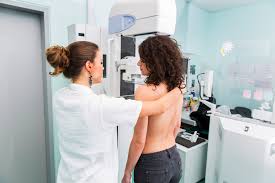Breast cancer is one of the most common cancers in Australia. Treatment options have improved significantly over the years, resulting in better outcomes for patients. People can now choose from a range of therapies based on the type and stage of cancer. Breast cancer treatment Australia follows medical guidelines that focus on early detection and effective care. The process typically begins with a diagnosis, followed by treatment planning conducted by a team of experts. Each step is tailored to the patient’s condition for optimal benefit. In this article, we will outline the primary types of treatments currently available.
Surgery Is Often the First Step
Surgery is usually the first treatment for early-stage breast cancer. Doctors may remove only the tumour (lumpectomy) or the entire breast (mastectomy). Some patients also need lymph node removal. Breast cancer treatment in Australia ensures that surgery is followed by the proper care to prevent a relapse. Hospitals also offer breast reconstruction after mastectomy to improve quality of life.
Radiation Therapy Helps Reduce the Risk of Return
After surgery, many patients receive radiation. This treatment utilises high-energy rays to target and destroy any remaining cancer cells. It helps reduce the chance of the cancer returning. Radiation is usually given to the breast area, especially after lumpectomy. Doctors plan this based on how much of the breast was removed.
Chemotherapy Works Across the Whole Body
Chemotherapy treats cancer that may have spread. It uses drugs to destroy cells that may not be seen on scans. Some people get chemotherapy before surgery to shrink the tumour. Others get it afterward to lower the risk of recurrence. Breast cancer treatment in Australia includes access to a range of chemotherapy options suited to the patient’s condition.
Hormone Therapy Blocks Cancer Growth
Some cancers grow because of hormones like oestrogen. Hormone therapy helps by blocking these hormones. It can be given as pills or injections. Doctors recommend it for cancers that test positive for hormone receptors. This treatment is often administered for several years after other treatments have concluded.
Targeted and Immunotherapy Offer Advanced Options
Modern treatments now include drugs that attack cancer cells directly. Targeted therapy is effective for cancers with specific features, such as HER2-positive tumours. Immunotherapy is used in some aggressive types, such as triple-negative breast cancer. These treatments may have fewer side effects compared to chemotherapy. They are an essential part of breast cancer treatment in Australia.
Ongoing Support from Other Specialists
Support doesn’t end with treatment. Patients may need eye care, especially if they take drugs that affect vision. This is where ophthalmologists in Adelaide play a role. Some therapies can lead to changes in eyesight. Regular check-ups with an ophthalmologist in Adelaide can help manage this condition. They also assist in treating eye issues caused by ageing or unrelated conditions.
Why Follow-Up Care Matters
Staying in touch with your care team is essential. After treatment, patients should attend regular check-ups, which help identify any signs of cancer recurrence. These check-ups also address potential side effects that may arise later. Some patients continue to visit ophthalmologists in Adelaide if they notice changes in vision due to medication.
Conclusion
Breast cancer treatment in Australia combines surgery, radiation, and drug therapy to offer the best possible care. Doctors choose treatments based on each patient’s specific needs, the type of cancer, and its stage. Newer options, such as targeted and immunotherapy, further improve the results. Support from other specialists, including ophthalmologists in Adelaide, plays a crucial role in achieving a full recovery. Regular follow-ups ensure that problems are identified early and effectively managed. With access to good hospitals and skilled professionals, people in Australia can expect safe and effective treatment for breast cancer. Being informed and involved helps patients feel more in control of their care.
